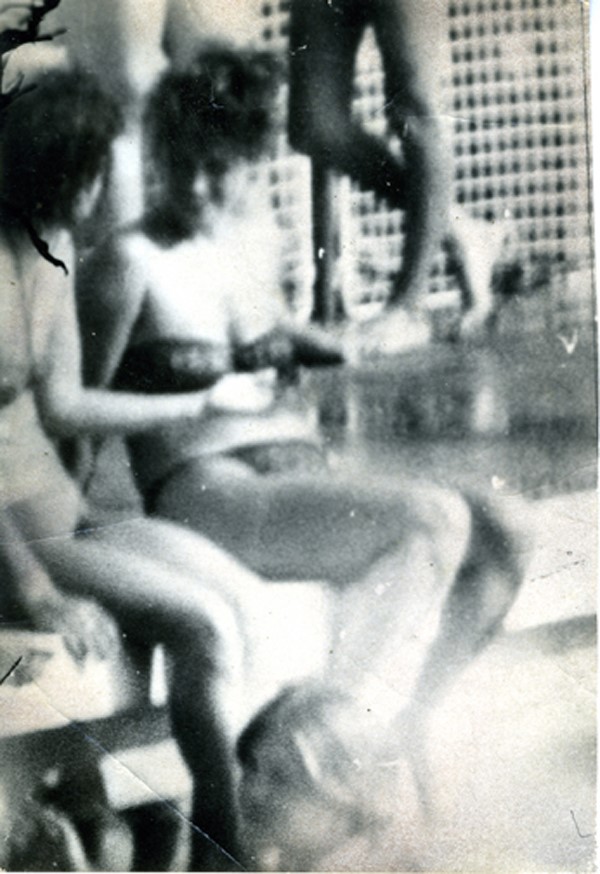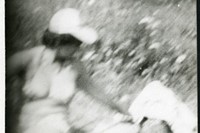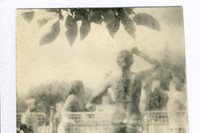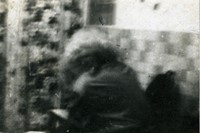The clean gallery walls and sharp-edged picture frames with their crisp, white mounts could hardly be more at odds with the photographs they house.
The clean gallery walls and sharp-edged picture frames with their crisp, white mounts could hardly be more at odds with the photographs they house. Stained, scribbled over, even bearing rat’s teeth-marks, the late Miroslav Tichy’s images were created in their hundreds and left to pile up, spilling over tables and floors in his makeshift studio, in the tiny Czech town of Kyov. Taken with a camera jerry-rigged from cardboard boxes, tins and elastic bands and with a lens smeared with ash or toothpaste, each image is an individual fug of shadows, anointed here and there with biro.
What Tichy hunted with his homemade camera, from the 1960s to the 1980s, though is singular: women, or rather women’s bodies are the constant subject of his photos. Apparently largely oblivious to the wild-haired town eccentric that was Tichy, they’re caught striding down the highstreet lost in thought; or shot from behind, their bottoms protruding; countless images show women sunbathing in parks, seemingly taken from the bushes, in the murk. In one work the image is so grainy that only copious breasts beneath a white jumper emerge like beacons from black and white gloom. Similarly, the sequins on the bustier of a smiling showgirl are lit up like starry nipples.
So Tichy was a creep, but his mania was complex (when isn’t it?). Born in 1926 in what was then Czechoslovakia, Tichy, who died last month, began as a painter, creating abstract modernist works. The communist regime initiated in the 1940s disapproved of such non-social realist radicalism, persecuting Tichy as a dissident. His response was to form the rebel artist’s group the Brnenská Petka (Brno Five). Yet the mentally fragile Tichy had a breakdown, withdrawing to his hometown, where his photographic odyssey kicked off. In a twisted parody-come-subversion of the State scrutiny he’d endured, he began his own surveillance program.
Miroslav Tichy runs until 5 June at Wilkinson Gallery, London.



